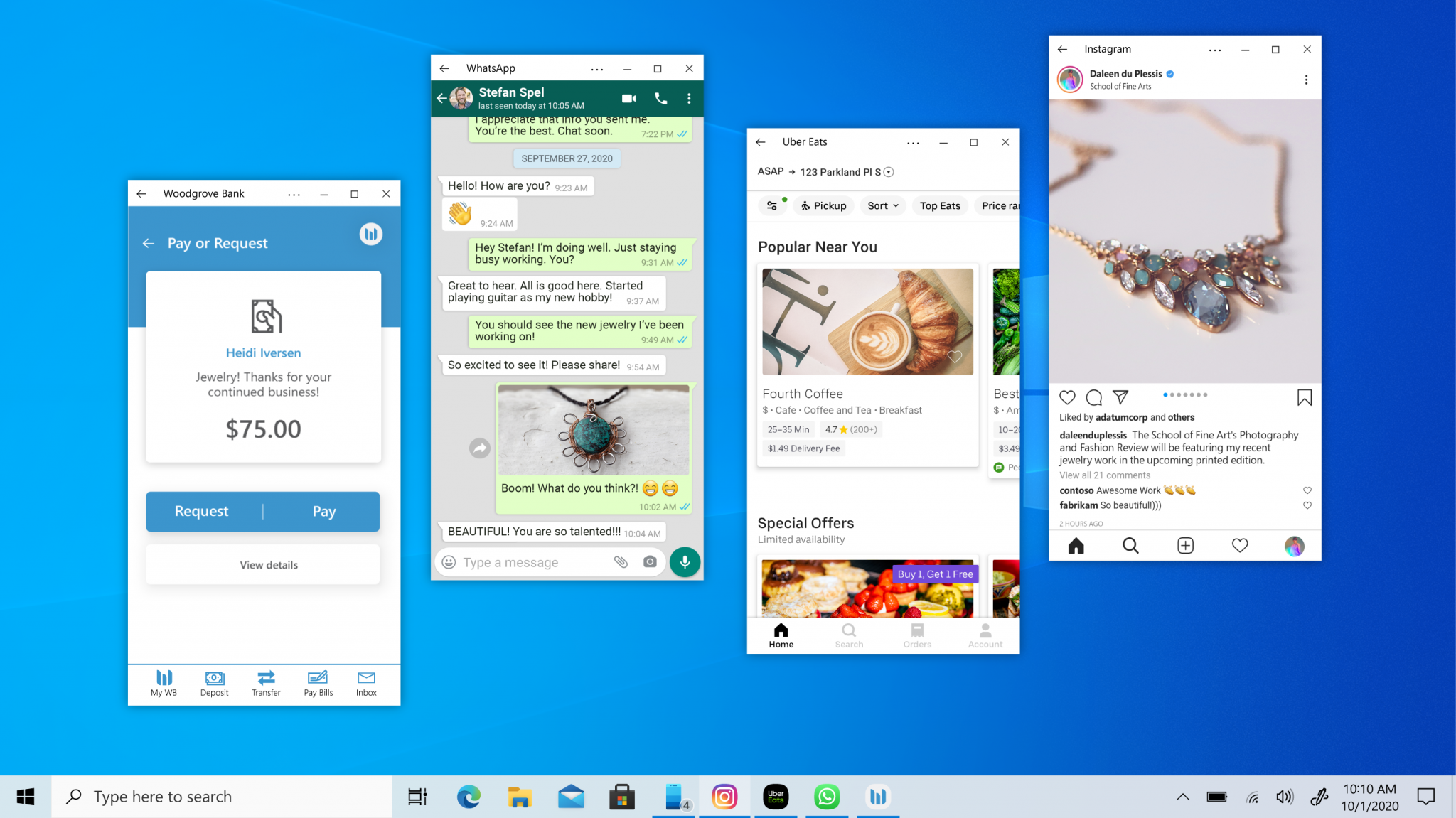Microsoft’s Project Latte expose more details about building an Android subsystem to allow Windows 10 to run Android apps
Microsoft seems to intend to allow Windows 10 to run Android applications directly next year without streaming through screens.
Currently, Microsoft has already streamed Android apps to the computer through the Your Phone app, but this function essentially only projects the screen to the computer instead of running it locally.
Project Latte hopes that Android applications can run directly on Windows 10, which means we don’t need to cooperate with Android phones to get it done.
The problem is that this idea requires Microsoft to build a virtual machine or emulator, and Microsoft may also choose to integrate the Android subsystem directly in Windows 10.
At present, the Windows 10 system has directly integrated the Linux system to turn this system into a subsystem, which is also known as WSL and WSL 2 version.
Isn’t it normal for Microsoft to integrate the open-source Android system into Windows 10? So although it’s a bit surprising, it’s reasonable.
This project is called Project Latte internally at Microsoft, but it is not clear whether to develop the Android emulator or directly the Android subsystem.

Either way means that Windows 10 can directly execute Android applications locally, just like the M1 chip MacBook can run iOS applications.
It is not the first time that Microsoft has done this to run Android applications on Windows. Windows Phone tried to integrate Android converters five years ago.
It was only later that rumors said that Google opposed Microsoft to do so, so Microsoft stopped the project. After all, Google is the ultimate copyright holder for many things on the Android OS.
Project Latte did not reveal that Google is involved in the project, so it can be said that the entire Project Latte should have nothing to do with Google and it does not have Google’s support.
Due to licensing issues, running Android applications on Windows 10 will definitely not support Google Mobile Services (GMS).
Because Google does not allow Google mobile services to be deployed on non-Android or Chrome OS devices, even Microsoft is unlikely to obtain an exception from Google.
Therefore, developers may need to maintain the API interface by themselves so that the application can run better on Windows 10, otherwise, it may not be available on the Microsoft Store.
From a technical point of view, it is not difficult for Microsoft to develop an Android virtual machine or Android subsystem, and it is not a problem for Microsoft to even delete the Google Mobile Services.
Perhaps the biggest problem with the Windows 10 Android subsystem is the user experience. After all, these are two different operating systems and they are desktop and mobile systems.
Microsoft uses Microsoft’s fluent design system in Windows 10, while Android applications mostly use Google’s material language. The two different design styles have different experiences.
Via: windowscentral





